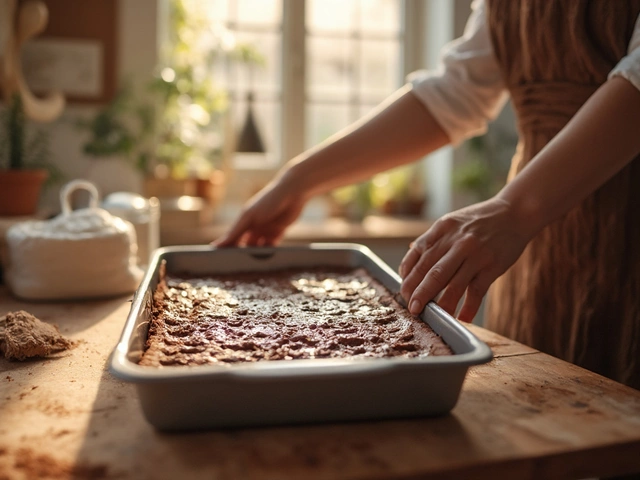Shelf Life Tips for Sweets, Cakes & Desserts
Ever pull a cake out of the fridge only to find it soggy or a batch of brownies turned dry? Knowing how long each treat stays good can save you money, waste, and a bad bite. Below are down‑to‑earth tips that work for most home bakers.
General Rules for Keeping Desserts Fresh
First, always start with clean containers. A tight‑fitting lid or a zip‑lock bag keeps air out, slowing mold and staling. If you’re stacking layers, use parchment between them to stop crumbs from getting soggy.
Second, temperature matters. Room‑temperature desserts like cookies can sit for a day or two, but anything with dairy or eggs needs refrigeration within two hours of cooling. For longer storage, the freezer is your friend – just wrap tightly in plastic and then foil.
Third, label everything. A quick note with the date helps you remember when you baked it, so you won’t accidentally eat something past its prime.
Specific Shelf Life Guides for Popular Treats
Fudge: Soft‑ball stage fudge stays creamy for about 2 weeks in the fridge if wrapped in wax paper and stored in an airtight container. Freeze for up to 3 months; thaw in the fridge to keep the texture smooth.
Brownies: Keep brownies in an airtight tin at room temperature for up to 4 days. If they contain frosting or a moist center, refrigerate and use within a week. Freeze for 2‑3 months for best flavor.
Tiramisu: Because it has mascarpone and raw eggs, tiramisu should be refrigerated and eaten within 3 days. You can freeze it for up to a month, but expect a slightly softer texture after thawing.
Cheesecake (eggless or not): Store cheesecake in the fridge, covered, for 5‑7 days. Freeze slices individually for up to 2 months; wrap each slice in cling film before bagging to avoid freezer burn.
Gluten‑free cakes: These tend to dry out faster. Keep them sealed and refrigerated, and use within 4 days. Freeze for up to 2 months and add a light mist of simple syrup before serving to bring back moisture.
Cookies: Most cookies stay crisp at room temperature for 5‑7 days in a jar. If you want them softer, add a slice of bread to the container; the bread’s moisture will keep the cookies chewy.
Remember, the biggest enemy is moisture. If a dessert feels wet or develops a strange smell, discard it. When in doubt, trust your senses – a sour smell or visible mold means it’s time to toss.
Using these straightforward storage tricks, you’ll get the most out of every batch you bake. Your sweet stash will stay fresh longer, and you’ll avoid the disappointment of a spoiled treat. Happy baking and enjoy every bite!

How Long Does Fresh Pastel Dough Last in the Fridge?
Wondering how long your fresh pastel dough can hang out in the fridge before it goes bad? The right storage methods keep your dough tasting great and safe to eat. Learn the real shelf life, signs your dough’s headed south, and quick ways to make it last longer. If you love fried treats or prepping desserts early, here’s what you need to know to avoid waste and food poisoning. Let’s get your pastel dough game on point.
View More




